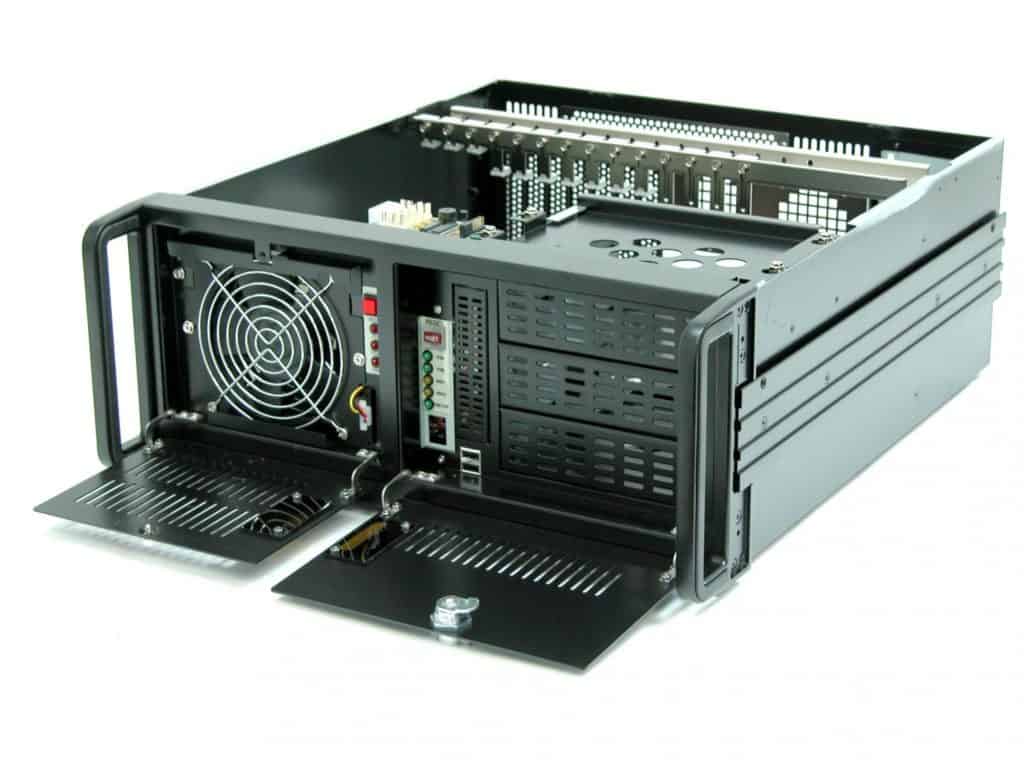The least used items have the most dust on them, but a hard working computer has the most dust in it. Why is it important to keep it clean? How do I make a maintenance schedule for it?
A sad fact is that dust will more readily accumulate on and inside an actively used computer than an unused one, and it even increases its workload.
The Walls of Defense Against Dust

1. The first place dust will accumulate is on the fan filters. They are your first defense against accumulation inside the system, so check and clean them regularly. With clogged filters, less air is cooling your system. The best place to stop it is by keeping your filters clean and replacing them as needed.
2. The cooling fans are the next favorite spot to accumulate. Like ice forming on the wings of an aircraft, even just a small amount of dust will disrupt the aerodynamics, reducing the effectiveness of the fan blades, and increasing their noise.
3. Once dust begins to grow into colonies of bunnies inside the eddies of the case, all mayhem breaks loose. Many consumer-grade electronics are only rated to operate up to 70°C. Because these computer systems are often locked away in a cabinet, temperatures inside the case can be much higher than the ambient temperature.
Dust creates a layer of insulation, preventing the airflow from cooling off the components. Not only that, but as it cakes onto the electronics, it will absorb moisture from the air and create connections and change resistance values between the semiconductors. As a result, your system will slow down at best, but it can cause errors and system instability.
A friend asked me to help him with his computer problems, and the first thing I noticed was the thick build-up of dust in it. I don’t think it even booted up. Just cleaning it out made the difference. Who knows, maybe unplugging it and plugging it back in also helped.
Cleaning
The effectiveness of these cleaning techniques will be dependent on the kind of dust in your environment. Start with a small cheap paintbrush and a vacuum cleaner to get as much dust as you can off the fan blades, circuit boards and cavities in the case. You can use compressed air, but there are dangers of breaking fan blades, particulate inhalation, and reintroducing it into other places you will soon be cleaning. Industrial soot can be very sticky and won’t come off with air or a simple wipe. You can clean it off the circuit boards with isopropyl alcohol. While this is a delicate and tedious procedure, but can be effective as a last resort. Do some research on different kinds of filters for your work environment.

You can clean or replace most fan filters. You can find industrial computer cases such as the 2U Compact IPC Case and 3U Quiet MicroATX Chassis which have an easily removable air filter for cleaning and replacement via a pull-out tab. Also, many of the 4U cases have a hatch to access the filter compartment.
Maintenance schedule
Preventative maintenance is key to success, so include PC cleaning on your schedule. What maintenance schedule works for you?
Industrial environments vary from the harshest of elements to cleanrooms that are virtually dust free.
In an office environment, start with monthly checks on the filters. During these checks, inspect the accumulation of dust, and every second or third month check the inside of the case.
Conversely, computer systems in the same room as your manufacturing workforce are at the other end of the spectrum. In particular, the worst culprits of conductive grime are from welders, plasma and laser cutters, among other metalworks. Add additional barriers to keep conductive grime away from the system, or clean it more regularly.




Nice job Matt